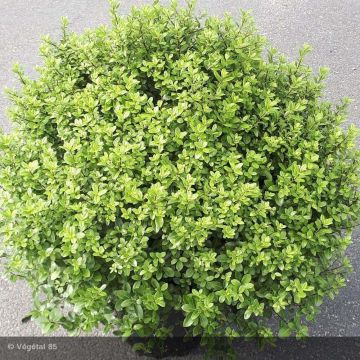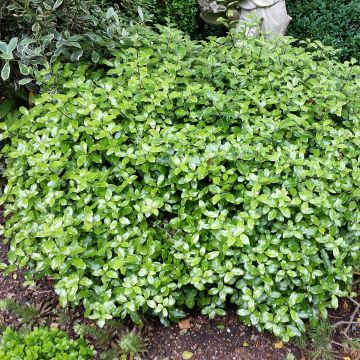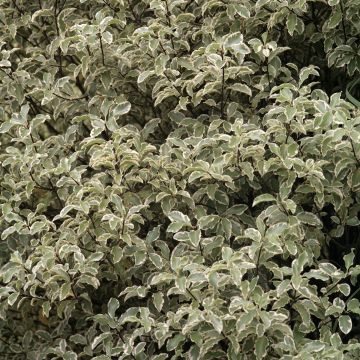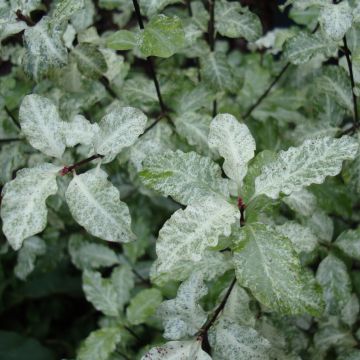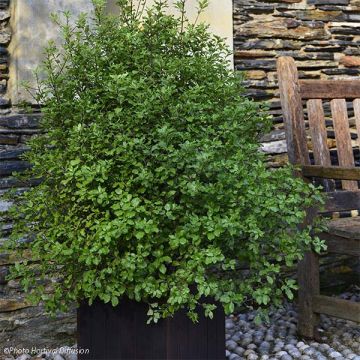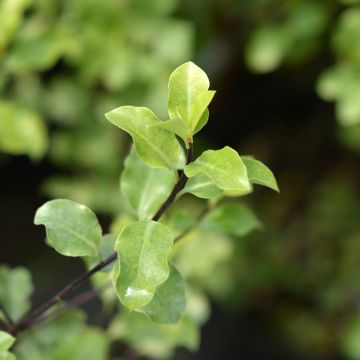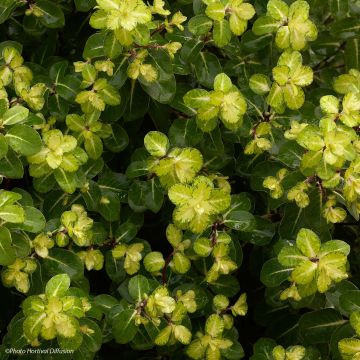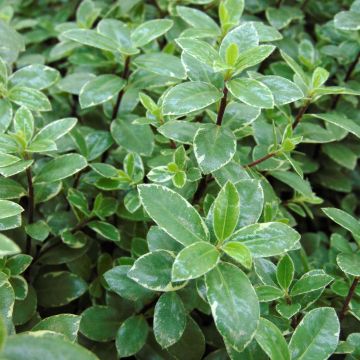Plantfit
Log in / Register
Existing customer?
New customer?
Create an account to track your orders, access our customer service and, if you wish, make the most of our upcoming offers.
My Account
Hello
Shipping country and language
Your country of residence may be:
For a better user experience on our website, you can select:
Your shipping country:
Andorra
Austria
Belgium
Bulgaria
Croatia
Czechia
Denmark
Estonia
Finland
France
Germany
Greece
Hungary
Iceland
Ireland
Italy
Latvia
Lithuania
Luxembourg
Monaco
Netherlands
Poland
Portugal
Romania
Slovakia
Slovenia
Spain
Sweden
Switzerland
Language:
French
English
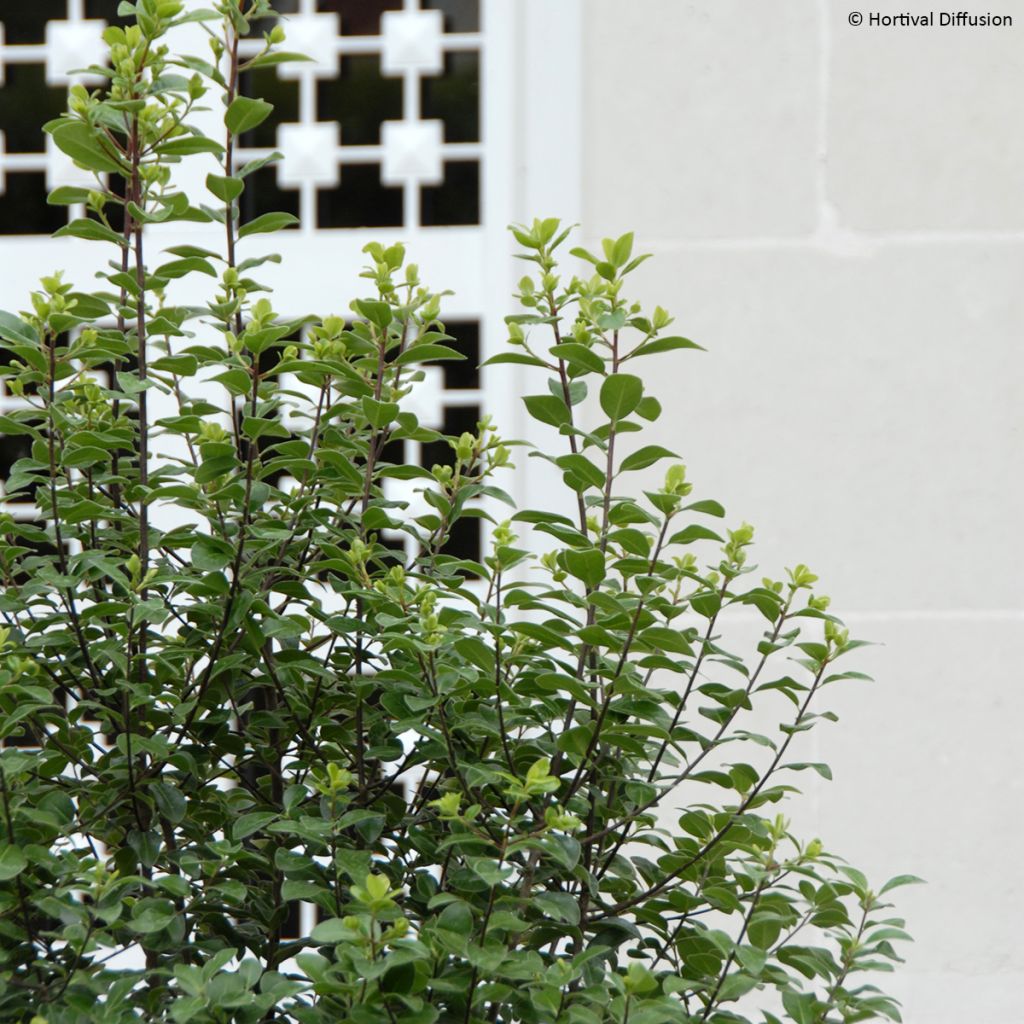

Pittosporum tenuifolium Midget - Kohuhu
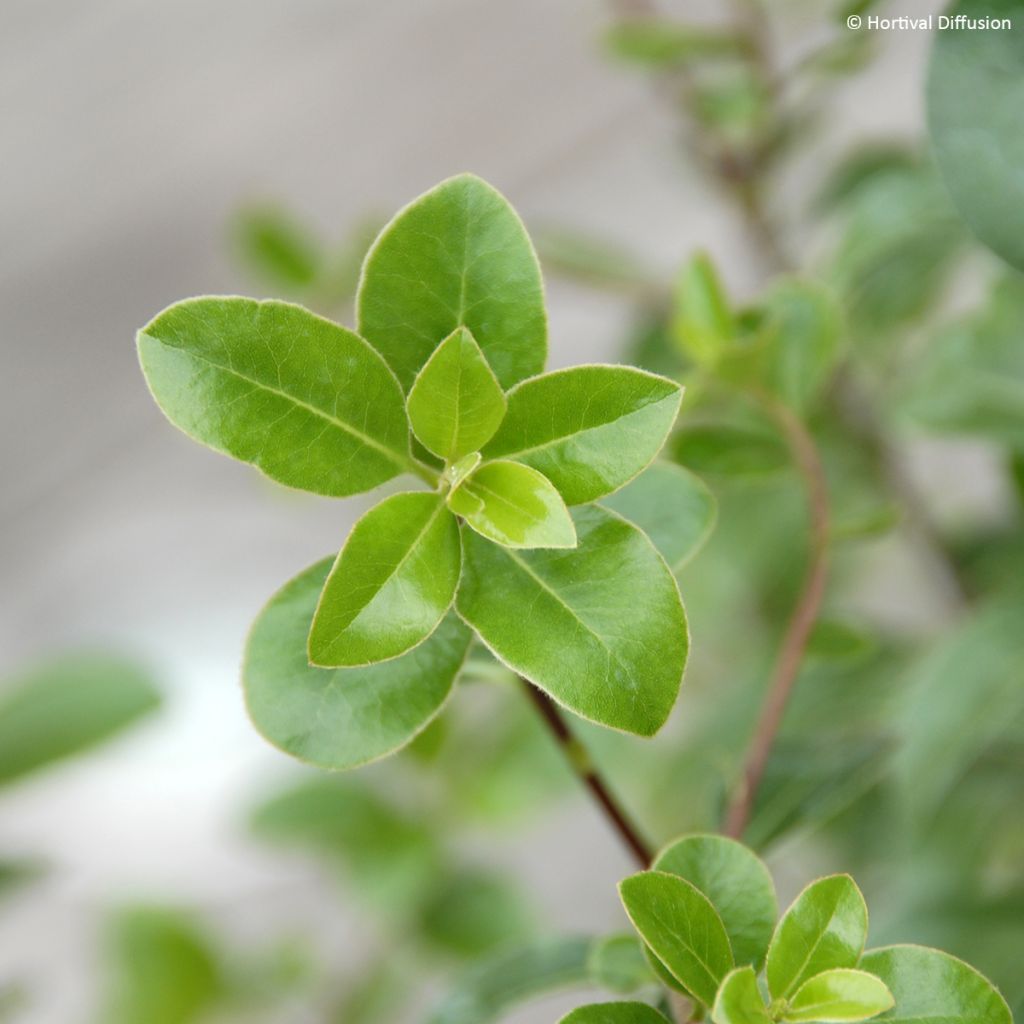

Pittosporum tenuifolium Midget - Kohuhu
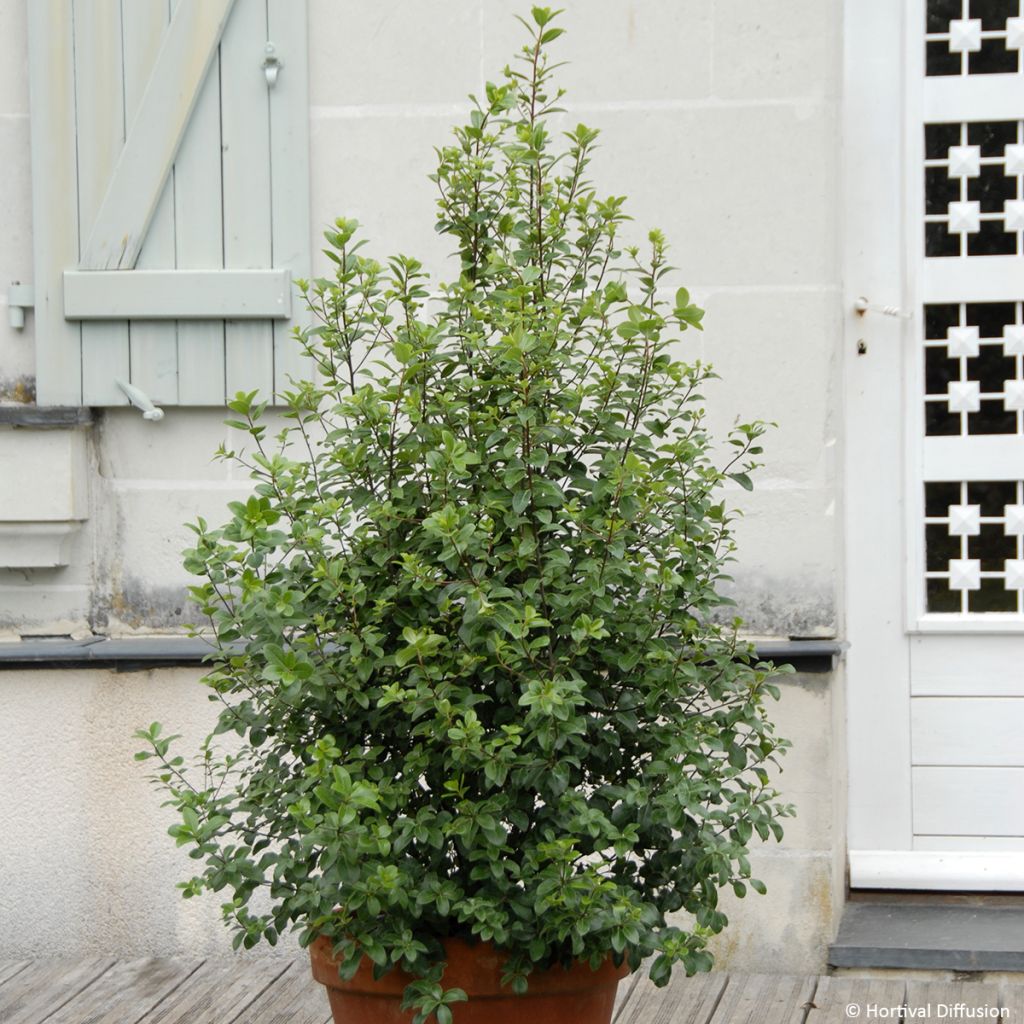

Pittosporum tenuifolium Midget - Kohuhu
Pittosporum tenuifolium Midget - Kohuhu
Pittosporum tenuifolium 'PTG18' IRISH LUCK
Tawhiwhi, Kohuhu, Black Matipo, New Zealand Pittosporum
Order in the next for dispatch today!
Dispatch by letter from €3.90.
Delivery charge from €5.90 Oversize package delivery charge from €6.90.
More information
This item is not available in your country.
Select delivery date,
and select date in basket
This plant carries a 24 months recovery warranty
More information
We guarantee the quality of our plants for a full growing cycle, and will replace at our expense any plant that fails to recover under normal climatic and planting conditions.
From €5.90 for pickup delivery and €6.90 for home delivery
Express home delivery from €8.90.
Does this plant fit my garden?
Set up your Plantfit profile →
Description
Pittosporum tenuifolium 'Midget' is a dwarf variety of pittosporum with small leaves that makes a good alternative to boxwood in mild climates. This small, round shrub is densely packed with tender green foliage, is decorative all year round, and is less susceptible to pests that decimate boxwood. This pittosporum tolerates pruning well and offers subtle flowers in late spring, releasing a honey scent in the evening. Its only weakness is its limited hardiness, which restricts its cultivation in the ground to mild regions. Plant it in a sunny rockery, or a dry garden, as it tolerates summer drought and limestone soils well. In colder regions, plant it in a large pot on the terrace or balcony, so that it can be stored away from frosts in cold winters.
Pittosporum tenuifolium, from the Pittosporaceae family, is native to the dry regions east of the New Zealand Alps. The 'Midget' cultivar has very short internodes, a naturally round and very compact habit. It grows quite rapidly, forming a dense and stocky bush of 50 to 80 cm (20 to 32in) in all directions, sometimes up to 1 m (3ft), in a few seasons. Its highly branched stems bear leaves that persist all year round, even in winter. They are alternate, entire, ovate, thick, very smooth, glossy, leathery leaves. They are small, not exceeding 3 to 3.5 cm (1in) in length and 1.5 cm (1in) in width. Flowering occurs in late spring or early summer. The small dark cup-shaped flowers, less than 1 cm (1in) in diameter, release a scent which is more noticable at night. Flowers are followed by the formation of a few round fruits, initially green and then almost black when ripe. A severe winter may destroy all or part of the vegetation, but the plant can regenerate from the stump or the base of the branches, after severely pruning the plant.
Hardy down to -7°C/-10°C, Pittosporum Midget requires a well-drained soil, and a warm, sunny location, sheltered from prevailing winds. In mild climates, it can be planted in a rockery or at the edge of a planting bed. In a dry garden, it can be paired with Cistus, lavender, oregano, or thyme. In colder regions, it can be placed in a container on a terrace to enjoy its delicate scent and rounded charm. This variety, like boxwood, can also form a neat little hedge and is suitable for topiary, but it has the advantage of being unaffected by boxwood pests. It can also be accompanied by red or fuchsia bush salvias, Prostanthera, Westringia, Grevillea, compact Escallonias, or combined with the silver foliage of Artemisia, Helichrysum, and santolines.
Pittosporum tenuifolium Midget - Kohuhu in pictures




Plant habit
Flowering
Foliage
Botanical data
Pittosporum
tenuifolium
'PTG18' IRISH LUCK
Pittosporaceae
Tawhiwhi, Kohuhu, Black Matipo, New Zealand Pittosporum
Cultivar or hybrid
Planting and care
Pittosporum Midget should preferably be planted in spring in a fertile, soft, well-drained soil. It tolerates limestone but prefers soils rich in loam. At planting, mix leaf compost and coarse sand with your garden soil, up to 50%. Water your plant well once or twice a week to promote good root growth. Once established (after 2 or 3 years), this bush will not require watering in summer. In very dry regions, occasional watering in summer will be welcome. Not very hardy , to -7°C/-10°C (14°F), choose a warm location, in full sun which is sheltered from prevailing winds. Keep the base of the plant mulched. Plant it along a south-facing wall in regions with harsh winters. In cooler climates, cover it with a winter veil or shelter it in a frost-free conservatory for the winter season. To help it branch out during the first years of planting, pinch the young shoots. Prune mature plants at the end of the season, removing the branches that appear untidy. It is entirely possible to shape it into a ball or a hedge, as it tolerates pruning well. In case of a somewhat harsh winter (prolonged cold, snow), prune severely, the plant will sprout again and the 'ball' will reform. In the most severe cases, prune it to ground level, as it is likely to sprout from the stump, quite late in spring.
Pittosporum tenuifolium can be susceptible to Phytophthora, a fungus that attacks the collar and roots in soils that are both constantly warm and humid.
Planting period
Intended location
Care
This item has not been reviewed yet - be the first to leave a review about it.
Arbustes à feuillage persistant
Haven't found what you were looking for?
Hardiness is the lowest winter temperature a plant can endure without suffering serious damage or even dying. However, hardiness is affected by location (a sheltered area, such as a patio), protection (winter cover) and soil type (hardiness is improved by well-drained soil).

Photo Sharing Terms & Conditions
In order to encourage gardeners to interact and share their experiences, Promesse de fleurs offers various media enabling content to be uploaded onto its Site - in particular via the ‘Photo sharing’ module.
The User agrees to refrain from:
- Posting any content that is illegal, prejudicial, insulting, racist, inciteful to hatred, revisionist, contrary to public decency, that infringes on privacy or on the privacy rights of third parties, in particular the publicity rights of persons and goods, intellectual property rights, or the right to privacy.
- Submitting content on behalf of a third party;
- Impersonate the identity of a third party and/or publish any personal information about a third party;
In general, the User undertakes to refrain from any unethical behaviour.
All Content (in particular text, comments, files, images, photos, videos, creative works, etc.), which may be subject to property or intellectual property rights, image or other private rights, shall remain the property of the User, subject to the limited rights granted by the terms of the licence granted by Promesse de fleurs as stated below. Users are at liberty to publish or not to publish such Content on the Site, notably via the ‘Photo Sharing’ facility, and accept that this Content shall be made public and freely accessible, notably on the Internet.
Users further acknowledge, undertake to have ,and guarantee that they hold all necessary rights and permissions to publish such material on the Site, in particular with regard to the legislation in force pertaining to any privacy, property, intellectual property, image, or contractual rights, or rights of any other nature. By publishing such Content on the Site, Users acknowledge accepting full liability as publishers of the Content within the meaning of the law, and grant Promesse de fleurs, free of charge, an inclusive, worldwide licence for the said Content for the entire duration of its publication, including all reproduction, representation, up/downloading, displaying, performing, transmission, and storage rights.
Users also grant permission for their name to be linked to the Content and accept that this link may not always be made available.
By engaging in posting material, Users consent to their Content becoming automatically accessible on the Internet, in particular on other sites and/or blogs and/or web pages of the Promesse de fleurs site, including in particular social pages and the Promesse de fleurs catalogue.
Users may secure the removal of entrusted content free of charge by issuing a simple request via our contact form.
The flowering period indicated on our website applies to countries and regions located in USDA zone 8 (France, the United Kingdom, Ireland, the Netherlands, etc.)
It will vary according to where you live:
- In zones 9 to 10 (Italy, Spain, Greece, etc.), flowering will occur about 2 to 4 weeks earlier.
- In zones 6 to 7 (Germany, Poland, Slovenia, and lower mountainous regions), flowering will be delayed by 2 to 3 weeks.
- In zone 5 (Central Europe, Scandinavia), blooming will be delayed by 3 to 5 weeks.
In temperate climates, pruning of spring-flowering shrubs (forsythia, spireas, etc.) should be done just after flowering.
Pruning of summer-flowering shrubs (Indian Lilac, Perovskia, etc.) can be done in winter or spring.
In cold regions as well as with frost-sensitive plants, avoid pruning too early when severe frosts may still occur.
The planting period indicated on our website applies to countries and regions located in USDA zone 8 (France, United Kingdom, Ireland, Netherlands).
It will vary according to where you live:
- In Mediterranean zones (Marseille, Madrid, Milan, etc.), autumn and winter are the best planting periods.
- In continental zones (Strasbourg, Munich, Vienna, etc.), delay planting by 2 to 3 weeks in spring and bring it forward by 2 to 4 weeks in autumn.
- In mountainous regions (the Alps, Pyrenees, Carpathians, etc.), it is best to plant in late spring (May-June) or late summer (August-September).
The harvesting period indicated on our website applies to countries and regions in USDA zone 8 (France, England, Ireland, the Netherlands).
In colder areas (Scandinavia, Poland, Austria...) fruit and vegetable harvests are likely to be delayed by 3-4 weeks.
In warmer areas (Italy, Spain, Greece, etc.), harvesting will probably take place earlier, depending on weather conditions.
The sowing periods indicated on our website apply to countries and regions within USDA Zone 8 (France, UK, Ireland, Netherlands).
In colder areas (Scandinavia, Poland, Austria...), delay any outdoor sowing by 3-4 weeks, or sow under glass.
In warmer climes (Italy, Spain, Greece, etc.), bring outdoor sowing forward by a few weeks.
